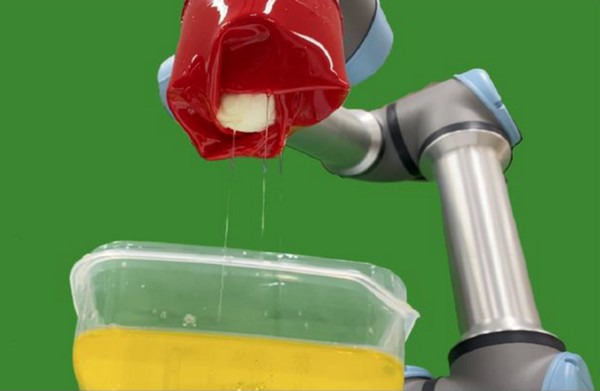Although grasping objects is a relatively straightforward task for us humans, there is a lot of mechanics involved in this simple task. Picking up an object requires fine control of the fingers, of their positioning, and of the pressure each finger applies, which in turn necessitates intricate sensing capabilities. It’s no wonder that robotic grasping and manipulation is a very active research area within the field of robotics.
Today, industrial robotic hands have replaced humans in various complex and hazardous activities, including in restaurants, farms, factories, and manufacturing plants. In general, soft robotic grippers are better suited for tasks in which the objects to be picked up are fragile, such as fruits and vegetables. However, while soft robots are promising as harvesting tools, they usually share a common disadvantage: their price tag. Most soft robotic gripper designs require the intricate assembly of multiple pieces. This drives up development and maintenance costs.
 Grasping a boiled egg from an olive oil tank.
Grasping a boiled egg from an olive oil tank.
Fortunately, a research team from the Japan Advanced Institute of Technology (JAIST), led by Associate Professor Van Anh Ho, have come up with a groundbreaking solution to these problems. Taking a leaf from nature, they have developed an innovative soft robotic gripper called ‘ROSE,’ which stands for ‘Rotation-based Squeezing Gripper.’ Details about ROSE’s design, as well as the results of their latest study, have been presented at the Robotics: Science and Systems 2023 (RSS2023) conference.
What makes ROSE so impressive is its design. The soft gripping part has the shape of a cylindrical funnel or sleeve and is connected to a hard circular base, which in turn is attached to the shaft of an actuator. The funnel must be placed over the object meant to be picked up, covering a decent portion of its surface area. Then, the actuator makes the base turn, which causes the flexible funnel’s skin to wrap tightly around the object, as shown in this video. This mechanism was loosely inspired by the changing shapes of roses, which bloom during the day and close up during the night.
ROSE offers substantial advantages compared to more conventional grippers. First, it is much less expensive to manufacture. The hard parts can all be 3D-printed, whereas the funnel itself can be easily produced using a mold and liquid silicone rubber. This ensures that the design is easily scalable and is suitable for mass production.
For more information:
Japan Advanced Institute of Science and Technology
www.jaist.ac.jp
